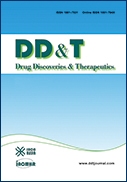Volume 10, Issue 3
Displaying 1-9 of 9 articles from this issue
- |<
- <
- 1
- >
- >|
Reviews
-
2016Volume 10Issue 3 Pages 123-128
Published: 2016
Released on J-STAGE: July 19, 2016
Download PDF (1743K) -
2016Volume 10Issue 3 Pages 129-140
Published: 2016
Released on J-STAGE: July 19, 2016
Download PDF (1804K)
Original Articles
-
2016Volume 10Issue 3 Pages 141-149
Published: 2016
Released on J-STAGE: July 19, 2016
Download PDF (708K) -
2016Volume 10Issue 3 Pages 150-155
Published: 2016
Released on J-STAGE: July 19, 2016
Advance online publication: June 29, 2016Download PDF (499K) -
2016Volume 10Issue 3 Pages 156-162
Published: 2016
Released on J-STAGE: July 19, 2016
Advance online publication: June 15, 2016Download PDF (392K)
Brief Reports
-
2016Volume 10Issue 3 Pages 163-166
Published: 2016
Released on J-STAGE: July 19, 2016
Advance online publication: May 07, 2016Download PDF (893K) -
2016Volume 10Issue 3 Pages 167-171
Published: 2016
Released on J-STAGE: July 19, 2016
Advance online publication: June 15, 2016Download PDF (253K) -
2016Volume 10Issue 3 Pages 172-176
Published: 2016
Released on J-STAGE: July 19, 2016
Advance online publication: May 07, 2016Download PDF (485K)
Case Report
-
2016Volume 10Issue 3 Pages 177-180
Published: 2016
Released on J-STAGE: July 19, 2016
Advance online publication: June 15, 2016Download PDF (243K)
- |<
- <
- 1
- >
- >|
